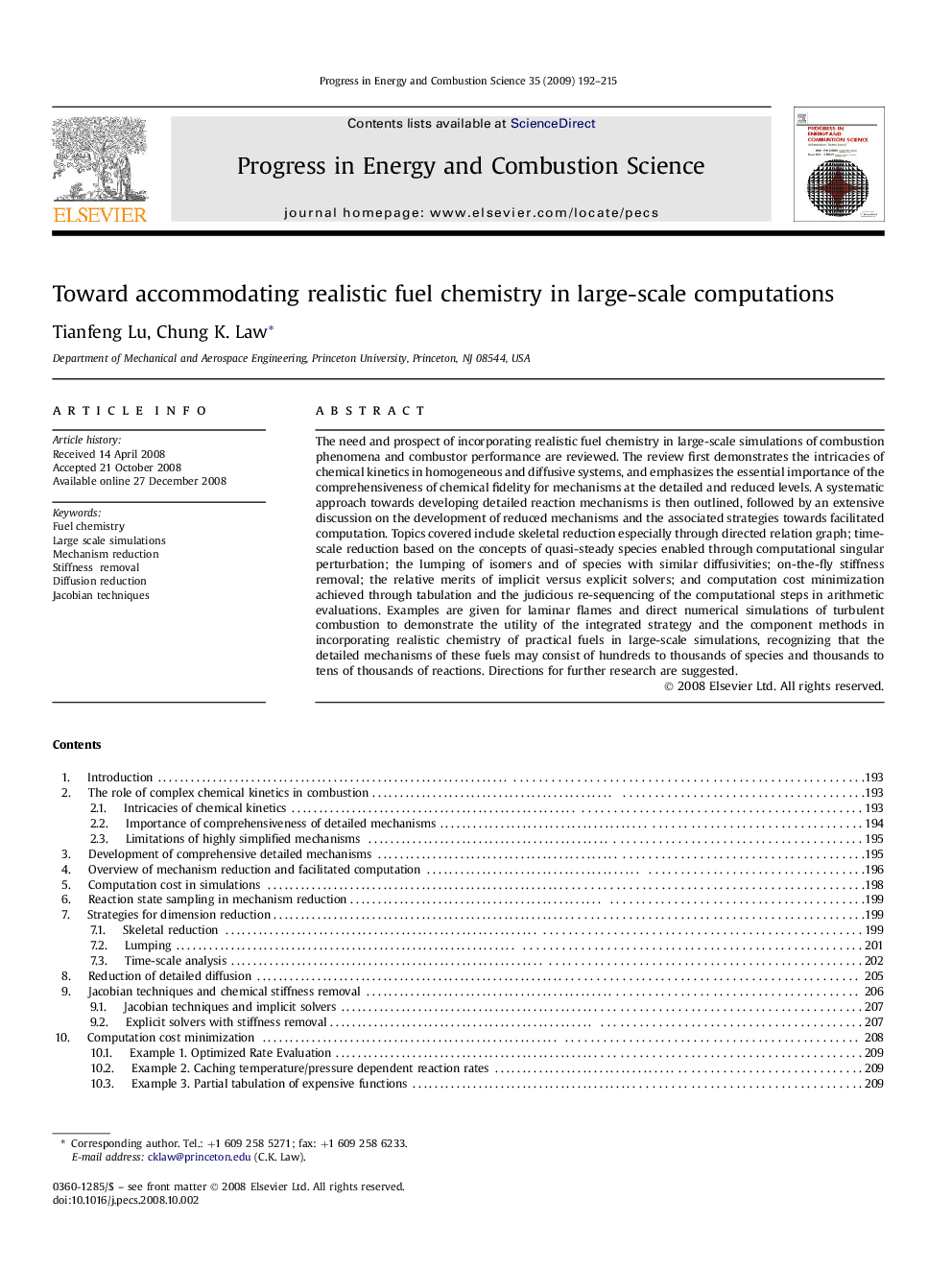| Article ID | Journal | Published Year | Pages | File Type |
|---|---|---|---|---|
| 241797 | Progress in Energy and Combustion Science | 2009 | 24 Pages |
The need and prospect of incorporating realistic fuel chemistry in large-scale simulations of combustion phenomena and combustor performance are reviewed. The review first demonstrates the intricacies of chemical kinetics in homogeneous and diffusive systems, and emphasizes the essential importance of the comprehensiveness of chemical fidelity for mechanisms at the detailed and reduced levels. A systematic approach towards developing detailed reaction mechanisms is then outlined, followed by an extensive discussion on the development of reduced mechanisms and the associated strategies towards facilitated computation. Topics covered include skeletal reduction especially through directed relation graph; time-scale reduction based on the concepts of quasi-steady species enabled through computational singular perturbation; the lumping of isomers and of species with similar diffusivities; on-the-fly stiffness removal; the relative merits of implicit versus explicit solvers; and computation cost minimization achieved through tabulation and the judicious re-sequencing of the computational steps in arithmetic evaluations. Examples are given for laminar flames and direct numerical simulations of turbulent combustion to demonstrate the utility of the integrated strategy and the component methods in incorporating realistic chemistry of practical fuels in large-scale simulations, recognizing that the detailed mechanisms of these fuels may consist of hundreds to thousands of species and thousands to tens of thousands of reactions. Directions for further research are suggested.
